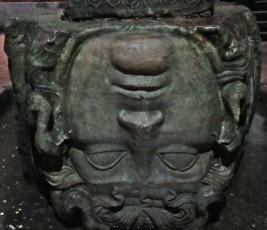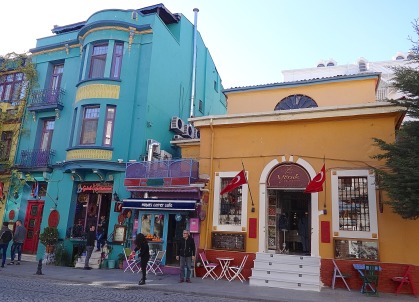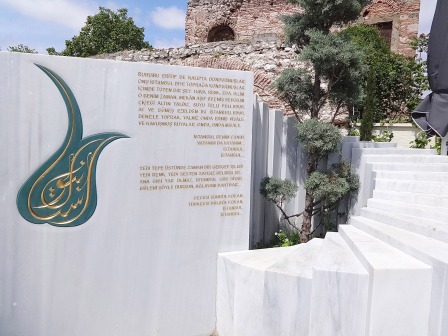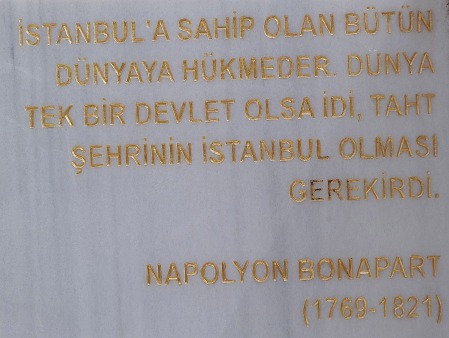Running west from Sultanahmet Meydanı across the tramlines is Yerebatan Caddesi with, just downhill, the entrance to the Yerebatan Sarnıçı (Underground or Basilica Cistern), the most famous and atmospheric of the many underground water storage areas dating back to Byzantine times that dot Old İstanbul.
Yerebatan Sarnıçı (Basilica Cistern)
One of İstanbul’s best loved attractions is also one of its most curious. Across the road from Ayasofya, the 6th-century Yerebatan Sarnıcı is extraordinarily romantic. For many visitors, though, it’s something of a mystery. What on earth was the purpose of this structure with its 336 columns lined up in rows, their bases sitting in water?
Actually, it was a giant reservoir for the water that had been piped into the town centre from the Thracian forests beyond the city walls. This particular cistern continued in use into Ottoman times. When full it would have been able to hold some 80 million litres of water.
For most visitors just gazing over the eerie vista of the columns is pleasure enough but within the Yerebatan Sarnıcı there are also some specific sights including a column decorated with what look like the eyes in a peacock’s tail and two column bases adorned with giant heads, one of them said to depict the gorgon Medusa. The fact that one head is upside down and the other lying on its side suggests that the builders regarded them as just so much reusable rubble.
The cistern is now one of the city’s main attractions, kitted out with metal walkways, suitably evocative lighting and a selection of artworks resting in the water. It’s almost always crowded with visitors who gaze in awe at the columns and at the coins thrown into the water beneath them, before trekking along the walkways to inspect Medusa’s head.

Hard though it is to imagine it, the Yerebatan Sarnıçı was forgotten for centuries, the first western visitor to learn of it being a 16th-century French traveller called Petrus Gyllius who left a lyrical description of how he was taken fishing in a boat there by a man who had tunnelled into it just as some unscrupulous locals dig wells beneath their city-centre properties today.
The entrance to the cistern is on Divan Yolu (the road with the tram) as it starts to run downhill. Visitors have to pass through security which slows admissions down.
Along Yerebatan Caddesi
The three-storey house on the corner of Yerebatan Caddesi and beside the tram was home to Talat Paşa, grand vizier from 1917-18. Beside it is a tall and gorgeous wooden house that used to house the Tourism Police.
Heading west along the road past the little park on the right you will come to the small and little-noticed Uskubi İbrahim Ağa Cami standing on the site of a mosque dating back to 1465 which was built for Mehmet Han, a companion of Sultan Mehmet II (the Conqueror). In 1491 that mosque was replaced with the present one, named after a man from Skopje (Uskubi). This was rebuilt in 1735 and again in 1953. The mosque has a single stumpy minaret and is adorned with a fountain named after Dilsiz (Dumb) Tavşan Ağa. The tomb of İbrahim Ağa is just inside the entrance.
 On the other side of the road beside the colourful Kybele Hotel a souvenir shop now fills what was once the 19th-century Esad Efendi Library, its contents now rehoused in the Süleymaniye Library.
On the other side of the road beside the colourful Kybele Hotel a souvenir shop now fills what was once the 19th-century Esad Efendi Library, its contents now rehoused in the Süleymaniye Library.
Beyond the crossroads with Alay Köşkü Caddesi lies Çağaloğlu and the famous Çağaloğlu Hamam. If instead of going straight ahead you turn right down Alay Köşkü Caddesi you will come to the Hacı Beşir Ağa mosque complex which is distinguished by a fine sebil dating back to 1745. It was built for Beşir Ağa, Chief of the Black Eunuchs in the reign of Sultan Mahmud I. The courtyard opens onto a small mosque fronted by a portico with a medrese, now reused as a Koran school, opening off the side.
 Sleeping
Sleeping
There are a rapidly growing number of hotels in this area, many of them with fine views.
Adamar Hotel
Celal Sultan Hotel
İstanbul Old City Ayasofya Hotel
Kybele Hotel
Transport info
The nearest tram stop is Sultanahmet.
Nearby areas
 Quotation attributed to Napoleon on monument in park: “If the world was a single state, İstanbul would be its capital.”
Quotation attributed to Napoleon on monument in park: “If the world was a single state, İstanbul would be its capital.”


